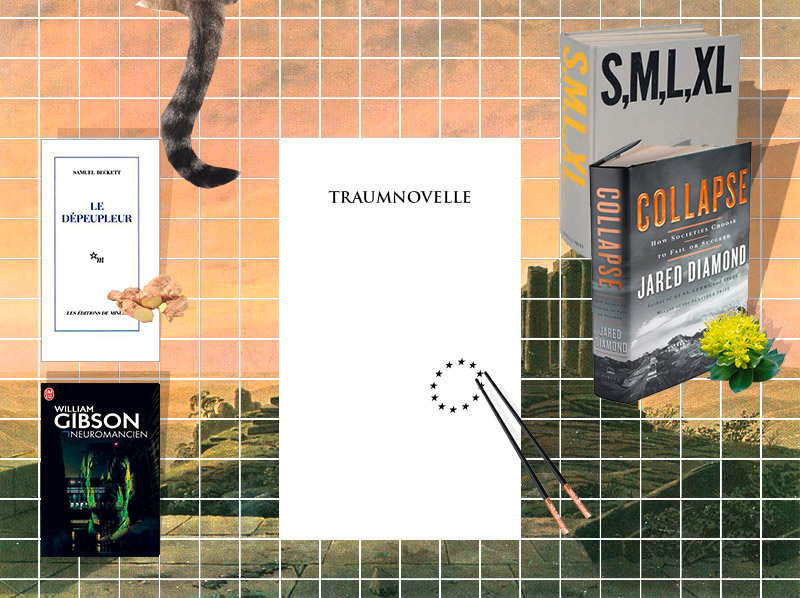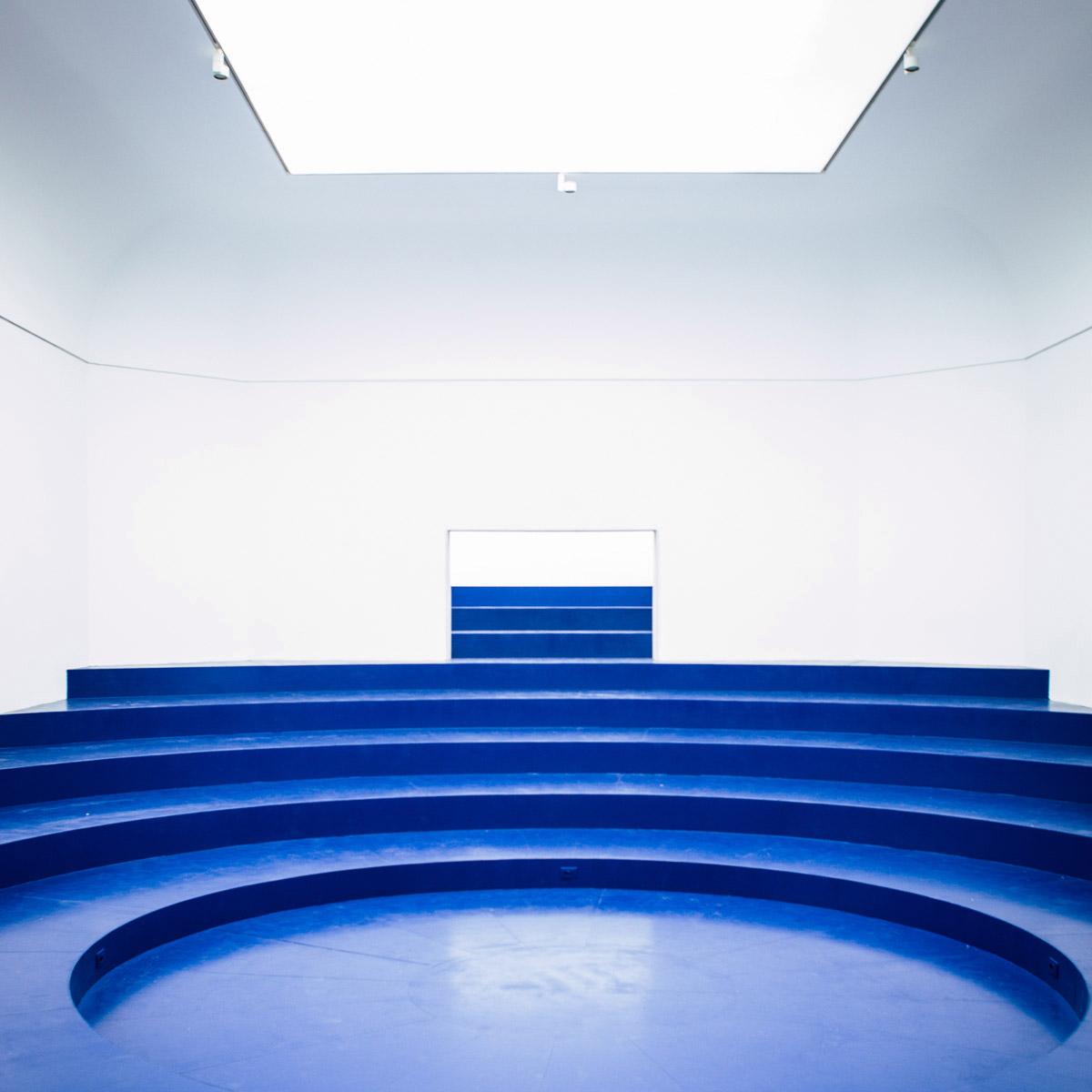18/012
Traumnovelle
A militant faction
Brussels

«For us, the essence of architecture is to help society to build its narratives.»
«For us, the essence of architecture is to help society to build its narratives.»
«For us, the essence of architecture is to help society to build its narratives.»
Please introduce yourself and your office?
We like to describe ourselves as a militant faction. The three founders of Traumnovelle are Léone Drapeaud, Manuel Leon Fanjul and Johnny Leya. Our tactic is to use architecture and fiction as analytical, critical and subversive tools to emphasize contemporary issues.We do not claim to provide the right answers but rather to ask the right questions. There is no right answer to a bad question.
Traumnovelle uses architecture and fiction as analytical, critical and subversive tools to emphasize contemporary issues and dissect their resolutions. Traumnovelle alternates between cynicism and enthusiasm all the while advocating for critical thinking in architecture. Traumnovelle champions a multi-disciplinary approach with architecture at the crossroads. Traumnovelle distances itself from current forms of naive architecture and refuses to glorify the mundane. Traumnovelle sides with those who have not sacrificed ambition and criticism.
How did you find your way into the field of Architecture?
All of us grew up in different parts of the world, many different cultures, nations and continents. Perhaps architecture was a way to understand the world but also a key to interact with it, to create a sense of belonging.
What comes to your mind, when you think about your diploma projects?
We met in school in the two studios ‘History Theory and Criticism’ and ‘Architecture Art and Landscape’ at La Cambre-Horta in Brussels. We owe a lot to these studios and their professors who taught us that architecture is a tool rather than an end. The last year curriculum at La Cambre is focused rather on a thesis than a diploma project, although of course both are correlated. Léone explored the spaces of feminist science fiction, trying to understand how feminist ideals can be embedded into space. She is the gender-critic of the team. Her diploma project offered working spaces for women in Delhi. Manuel researched the artist Gordon Matta-Clark, he is the ruinophile. His diploma project offered a dual re-programming of twin derelict WTC towers in Brussels into two seemingly opposed uses. Johnny investigated the legacy of French 18th century architect Jean-Jacques Lequeu. He is the romantic. His diploma project transformed old townhouses in the Brussels into a residency space much like a sarcophagus for architecture. It is interesting how all of these fields of interest come together in Traumnovelle to form more complex and ambitious fields of investigation.
What are your experiences founding Traumnovelle and working as self-employed architects?
We decided to found Traumnovelle five years ago when we were still in university. As we began to face the real world outside of the studio, we felt the need for a free area in which could act, think, draw, without any need for compromise. Our projects range form short stories, exhibitions and private commissions to a more academic approach through articles, lectures and workshops. One thing that is very important to us is, no matter how much work we have, is to always save space and time to learn. We are all working full time in other architecture studios because we still have a lot to learn from architectural practice.
What does your desk/working space look like?

What is the essence of architecture for you personally?
For us, the essence of architecture is to help society to build its narratives.
Your master of architecture?
A Book: Samuel Beckett, Le Dépeupleur (1970)
A Person: Grandfather Rem
A Building: Giuseppe Terragni’s Danteum (1938)
A movie: Andreï Tarkovski, Stalker (2009)
What is the essence of architecture for you personally?
For us, the essence of architecture is to help society to build its narratives.
Your master of architecture?
A Book: Samuel Beckett, Le Dépeupleur (1970)
A Person: Grandfather Rem
A Building: Giuseppe Terragni’s Danteum (1938)
A movie: Andreï Tarkovski, Stalker (2009)

Project
EUROTOPIE
Belgian Pavilion at Biennale Architettura 2018
Venice
Curation by Traumnovelle and Roxane Le Grelle
Tell us about the curation of EUROTOPIE?
We consider Europe the last utopia, the only great narrative which can confront nationalism, a new collective identity. In the wake of Brexit and faced with the rise of various extremisms in Europe and in the world, Eurotopie is intended as an invitation to pursue the construction of Europe as a political ideal. We believe that architecture is a political tool and we hoped to seize this potential of fictional space-making. Fiction, just like architecture, is a powerful tool for dreaming of the future. Eurotopie embodies this fictional, ideal, Europe.
Eurotopie is at the crossroads between different fields. We worked with Roxane Le Grelle as co-curator, artists Sébastien Lacomblez, who was artistic director and also offered the sound installation in the pavilion collage artist Claire Trotignon, photographer Philippe Braquenier, politicial activist Lucile Rossat, graphic designer Jurgen Maelfeyt, researcher Dennis Pohl and philosopher Bruce Bégout. Our goal was to build, through various mediums, a common sense for this Eurotopie. The guideline that we used was the “optimisation of the real”. We believe that With their work, we hope to offer a glimpse of what Europe may be and how space-makers can learn from the supranational city: Brussels.
Brussels is where Europe has, for several decades, been taking place. Although this is quite obvious to the inhabitants of Brussels, most other european citizens have no idea of Europe’s territorial anchorage. Beyond a shared space, the existence of the European Quarter in Brussels is a survival requirement both for Europe and for Brussels. Although the European Quarter can be considered as the spatial expression of the European political system, it is, for reasons such as history, morphology, finance and security, impervious to citizen empowerment. Eurotopie therefore offers to create the European Quarter’s lacking civic space within the Belgian Pavilion itself.
By accepting the role of hostess of the common venture called Europe, we believe that Brussels has de facto accepted the responsibility for its spatial anchorage. In our essay “Eurocode 7”, we hold the EU Quarter to be a metonymia for Europe itself and we explore seven ways in which european construction could be continued, both in architectural and urban terms but also in political terms.
Above all, our hope is to entice readers and visitors to ponder, discuss, debate and, ultimately, to commit to constructing Europe.

What was most exciting and most disappointing after the opening of EUROTOPIE?
“Eurotopie” is our first built project. Gathering so many the people that contributed to the project, to our education, to our lives, on the opening day, was intense. Seeing people explore the space, dance, pose, hide and touch the walls was the most rewarding. And of course the most disappointing was that this moment was too short! Hopefully we managed to spark some hope for this new Europe yet to be …

What are your thoughts on the basic concept of La Biennale?
Calling into question the concept of the Biennale itself is counterproductive. It is an intense moment of energy, reflection and creation, bringing together all sorts of architects from all over the world and as such it creates richness and bonds. However, we do think that the old idea of national pavilions should be reconfigured; particularly in their current form in Venice where old colonial powers are owners of their pavilions in the Giardini whereas all other countries must battle – and pay – for representation. We are strongly opposed to the idea of methodological nationalism – the idea that identities are created by boundaries – and art and architecture are responsible for asking these questions.
This year, the Belgian pavilion was transformed into the Pavilion of Eurotopie. On top of this, we organised several collaborative events with other pavilions: one open-call called “OUTSIDE THE BOX” which offered the space in between the three pavilions of Belgium, the Netherlands and Spain as a basis to explore collaborative action, and a “EURODANCE PARTY” on the evening of the openings. On top of this, we invited many architects, critics, artists and writers from all over Europe to take part in various round tables and panels inside the agora.

Image Credits:
1 – Tom Erdmann, on behalf of Kontextur
2 – Philippe Braquenier, Voyage en Eurotopie, 2018 © Eurotopie
3 – 6’56’’ (Jurgen Maelfeyt), Eurotopie, 2018 © Eurotopie
4 – Tom Erdmann, on behalf of Kontextur